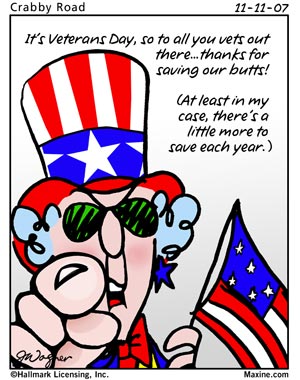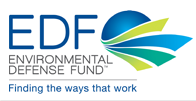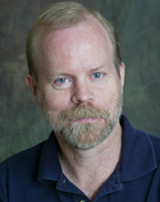"Soldiers of the 353rd Infantry near a church at Stenay, Meuse in France, wait for the end of hostilities. This photo was taken at 10:58 a.m., on November 11, 1918, two minutes before the armistice ending World War I went into effect"

From: http://www.va.gov/opa/vetsday/vetdayhistory.asp
__________


"It is because of these men, and the generations of Americans who served before and after them, that we enjoy our freedoms, our way of life, and our safety.
I hope we can show our gratitude and support to our veterans and the greater military community not just on Veterans Day but on every day of the year."
---------------
Nov 11, 1918:
World War I ends
"At the 11th hour on the 11th day of the 11th month of 1918, the Great War ends. At 5 a.m. that morning, Germany, bereft of manpower and supplies and faced with imminent invasion, signed an armistice agreement with the Allies in a railroad car outside Compiégne, France. The First World War left nine million soldiers dead and 21 million wounded, with Germany, Russia, Austria-Hungary, France, and Great Britain each losing nearly a million or more lives. In addition, at least five million civilians died from disease, starvation, or exposure.World War I was known as the "war to end all wars" because of the great slaughter and destruction it caused. Unfortunately, the peace treaty that officially ended the conflict—the Treaty of Versailles of 1919—forced punitive terms on Germany that destabilized Europe and laid the groundwork for World War II."
_________________
Military Working Dogs to be honored on Veterans Day

"Veterans Day is a time to recognize and appreciate the incredible work that is done and sacrifices that are made by America's Armed Forces so that the entire nation can live freely.
Military Working Dogs (MWDs) also risk their lives to keep America safe every day, so their contributions will be honored this Veterans Day, too, the Associated Press reports.
Dogs that worked in Iraq and in the Pentagon and World Trade Center on September 11 will be visiting the House Veterans Affairs Committee offices on Monday after winning the first-ever American Humane Association Hero Dog Awards, according to the news source."
_______________
Do You Want Phthalates With That?
"EPA is concerned about phthalates because of their toxicity and the evidence of pervasive human and environmental exposure to these chemicals.Phthalates are used in many industrial and consumer products, many of which pose potentially high exposure. Phthalates have been detected in food and also measured in humans.
Adverse effects on the development of the reproductive system in male laboratory animals are the most sensitive health outcomes from phthalate exposure."
More at: http://www.epa.gov/opptintr/existingchemicals/pubs/actionplans/phthalates.html
_______________
Chemicals of Concern Series Introduction
Part of our Chemicals of Concern series."Decades ago the chemical industry assured American consumers that potentially toxic chemicals used in everyday products like furniture and plastics would not be absorbed into our bodies – and therefore posed no risk to human health.
We now know differently: As chemicals have become ever more pervasive in our society, government studies show that hundreds of synthetic chemicals are in the bodies of all Americans. They are even present in newborn infants due to exposures in the womb coming from their mothers during pregnancy.
In its 2010 report the President's Cancer Panel (PCP) found that, "The true burden of environmentally induced cancers has been grossly underestimated," and was the first time that the panel made the link between chemical exposures and their significant contribution to cancer. Chemicals don’t respect demographics, they are in us wherever and however we live and work.
Exposures to chemicals have been linked to numerous disorders and diseases that are increasing in incidence including certain cancers, infertility and learning and developmental disabilities. These problems are the direct result of the absence of an effective national chemicals policy in the United States, which leaves us largely on our own to try to figure out what we can do to protect ourselves and our loved ones from toxic exposures.
In I Am Not a Guinea Pig's weekly Chemicals of Concern series, we will take a closer look into some chemicals of most concern to the public. Many of these chemicals are found in basic products and materials that we encounter regularly in our daily lives.
"Please take a moment to watch our video to learn about these threats and what you can do to protect you and your family."
Watch CBS News Videos Online


"In America, babies enter the world with the love of their parents and dozens of dangerous toxic chemicals -- including fire retardants, lead and pesticides -- in their blood.
I'm Richard Denison, Senior Scientist with Environmental Defense Fund's Health program, and I've spent most of the last 25 years working to protect children and families from dangerous chemicals in our environment -- chemicals that are polluting even our newborns.
Unfortunately, U.S. laws regulating toxic chemicals are woefully inadequate. But you can help EDF's team fix these broken laws. We've developed an advocacy campaign called Not A Guinea Pig, with the single goal of pressuring Congress to create effective chemical safety laws.
I hope you'll take a minute to check out our site, watch the video and then tell Congress to take a stronger stand on regulating these chemicals.
Fighting for protection from toxic chemicals is just one example of EDF's commitment to working with governments, business and communities to find strong, practical solutions to environmental health problems.
I'm pleased to welcome you to the Environmental Defense Fund Action Network and hope you'll join us in this battle to protect our most basic health rights.
 No American is safe until we win reform.
No American is safe until we win reform. Sincerely,

Dr. Richard Denison, Ph.D.
Senior Scientist
Environmental Defense Fund
1875 Connecticut Ave. NW, Suite 600
Washington, DC 20009
1-800-684-3322
________________
A Wake-Up Story is a must-see video for every parent and anyone that cares about the health and development of children. Watch it. Share it. Join the movement. http://www.awakeupstory.org/
___________________
Health Without Harm
A video of the history of Health Care Without Harm and its international efforts to help the health care sector reduce its environmental footprint.
___________________
Toxins In Cosmetics
News Report of Toxic make up on the market.
About this video:
"Recently, leading cosmetic companies including Avon, Estee Lauder, and Revlon embarked on a campaign to distribute pink ribbons, which are intended to highlight the need to support the fight against breast cancer.
The response of leading activist organization Breast Cancer Action Network was swift and sure. They condemned the campaign as a marketing gimmick and the companies as hypocritical. Why?
Because the very cosmetic and personal care products these and many other companies make are loaded with compounds believed to cause cancer.
It is hard to believe, but its a fact that experts say is becoming increasingly clear: most mainstream cosmetic and personal care products contain at least one hazardous chemical compound, and many contain far more than that. By various estimates, there are between about 5,000 and 10,000 ingredients currently being used in everything from eyeliner and lipstick to shampoos and deodorants.
While many are thought to be perfectly safe, many are not. The National Institute of Occupational Safety, for example, has identified almost 900 personal care chemicals that are toxic in one way or another. Some cause cancer. Others cause hormone disruption. Some are neurotoxins. And still others can cause organ damage.
In Europe, some 400 of these dangerous materials have been banned from consumer products. In the U.S., we're not so protected.
The presence of chemical ingredients in make-up and personal care products is regulated by the Food and Drug Administration. Unfortunately, under current law, the raw ingredients used in such products aren't subject to any kind of safety review or approval process before they are used, and manufacturers aren't legally obligated to submit safety data on their product formulas. Only after injuries and problems are reported by the public will investigations begin, and even then its a long way from there to any governmental action that might ban or restrict the compound at fault.
Investigations of the primary hazards that the cosmetic ingredients represent rarely, if ever, occur. That's because the conditions these ingredients are believed to cause are not immediately apparent. Instead, they take a long time to develop. Unlike a rash or irritation that appears soon after a product is used and disappears soon after that use is stopped, the most problematic illnesses and disorders believed to be caused by the ingredients in personal care products typically take years to manifest themselves. Things like cancer and hormonal disruption don't appear overnight, but only after many years.
As such, though we may have excellent reason to strongly suspect cosmetic ingredients as the cause of such maladies, that link is difficult to prove because no clear cause and effect relationship between the products and the disease can be definitively shown to exist. Too much time has passed between the exposure and the end result, or, alternatively, too many years are needed for low doses of a given chemical to do their dirty work. Thus, the public and scientists have great difficulty in demonstrating a direct connection between personal care chemicals and serious long-term illness, and even greater difficulty getting the FDA to investigate.
They may have solid lab results indicating that carcinogenic activity can be caused by a given chemical, but they have no real-world proof. Compounding this problem is the fact that manufacturers themselves are not required to report cosmetics-related problems to the government. In the case of cosmetics and personal care products, this is a particularly alarming state of affairs because the very nature of this family of products demands that they be used almost daily and applied directly to the skin.
Skin is the largest organ in the human body, and one of its most remarkable. A breathing layer of protection between ourselves and the world, it grows up and out in layers that replace themselves every 52 to 75 days. The average adult, in fact, sheds about 40 pounds of skin over the course of a lifetime, and typically carries around 21 square feet of it, weighing 7 pounds and containing 300 million individual cells. Each square inch of skin has roughly 10 hairs, 15 oil glands, 72 feet of nerve fiber, 100 sweat glands, and over 3 feet of blood vessels, which make our skin very absorbent and cause the things we put on it become quickly absorbed into our bodies.
When it comes to traditional personal care and make-up products, this can be quite hazardous to our health. Parabens, for example, are chemical preservatives that have been found to mimic estrogen and alter the body's delicate hormonal balance. Another class of compounds commonly found in such products is phthalates, which have been linked to breast cancer."
_____________
Yesterday:
We really had other plans for the day, as it was forecast to go down to 32° last night, but with Jay's doctor postponing his appointment that took precedence.
Misty and I went down to pick up Jay about 9.15, and for once he was about ready. After we left Misty at my house, Jay and I switched into the van to go to Conroe.
On the way, I dropped off two big bags of aluminum cat food cans at the recycling place I didn't get much for them, but it stopped them from adding to a landfill.
On to St. Marks. We left a bunch of paper in their recycling bin, and looked at the wares in their thrift shop, even though we were just there the day before. I bought a bedspread which will look good in the cargo trailer, a tray with Samoyed dogs on it, (http://www.dogbreedinfo.com/samoyed.htm), some nice new Keds shoes, and a little step stool. Jay got a camo t-shirt.
At Petco, I bought Bobbiecat some more arthritis medicine, plus some vitamins and treats for Misty. I bought some for Claudia's little Maddie the Yorkie, too. All she eats is people food, so she isn't getting all the vitamins and minerals that a doggie needs.
By then it was time to go to Jay's 11.30 appointment. I waited in the van with some coffee and a Reader's Digest, and read it from cover to cover. At 1.00, I went upstairs to see what was going on. There were several patients waiting and griping about the service, but Jay was in the staff's clutches, as he wasn't in the waiting room.
Finally after nearly 2½ hours, 'Jay had left the building', so we went to Lowe's to look for the sink drain parts for the cargo trailer. I had taken a picture of my screen porch/plant room's sink, as we wanted to do the same thing in the trailer. But with my printer still not talking to my computer, I couldn't blow it up, print it, and take a picture with me. It was still in my camera, but it was difficult to see the details, so all I bought was the sink basket. I think that I can make up most of it with what I have here in my 'plumbing dept.'
By this time, I was worried about Misty being left so long in the house, possibly with her eyes and legs crossed.
Jay had a prescription to drop off, so we ran in the back door of Walmart. I rushed to Electronics, picked up a printer, and paid for it in Automotive, while Jay went to the Pharmacy. With that delay at the doctor's office, the few food items that were on my list weren't bought. It would have taken up too much time to walk all the way to the front of Walmart to get my bananas, and they can't be checked out at Automotive, as they have to be weighed. Then we hurried straight back here.
Misty was so glad to see me. I let her out, while Jay got the things out of the van, then I took him home in the Puddle Jumper. I took one of the dog treats and a vitamin with me to see if that spoiled little 'bratkin', Maddie would eat them. Misty heard and smelled me opening them, and she enjoyed them. But she isn't persnickety after what she went through for those 3½ years after her 'Dad' died and before I rescued her. Maddie just put them on Claudia's new carpet and walked off.
The kittens didn't get their lunch until about 4.00PM, and neither did I.
The new printer set-up went like a breeze. It scanned, printed and copied. The little plug that goes from the printer into that box on the 110v. cord wouldn't stay plugged in, so I put a thick rubber band and some tape around it. I'll tend to that later.
It went down to 30° last night, but not long enough to hurt the plants, I hope. The high was only 65 deg. so waiting in the van was quite pleasant yesterday.


















No comments:
Post a Comment